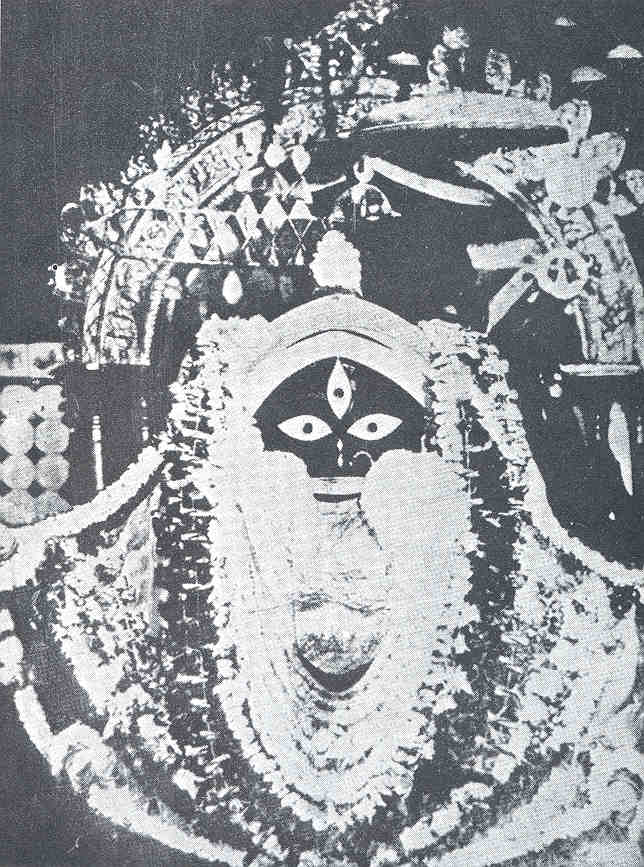Kalighat is located in the city of
Calcutta on the banks of the river Hooghly (Bhagirathi). The name Calcutta
is said to have been derived from the word Kalighat.

Kaali is regarded as one of the
principal deities of Bengal. There are other temples to Kaali - Sahasrabhuja
Kaali, Sarvamangala, Tarasundari and Simhavaahini. Kaali is regarded as the
destroyer or liberator and is depicted in a fearful form. Despite the terrifying form, she
is considered to deliver bliss to worshippers. The Kalighat temple attracts numerous
devotees throughout the year.
Kalighat is regarded as one of the 52
Shakti Peethams of India, where the various parts of Sati's body are said to have
fallen, in the course of Shiva's Rudra Tandava. Kalighat represents the site where the
toes of the right foot of Shakti or Sati fell. (see Daksha Yagna).
The Temple: The Kalighat temple in
its present form iis only about 200 years old, although it has been referred to in Mansar
Bhasan composed in the 15th century, and in Kavi Kankan Chandi
of the 17th century.
Legend has it that a devotee
discovered a luminant ray of light coming from the Bhagirathi river bed, and upon
investigating its source came upon a piece of stone carved in the form of a human toe. He
also found a Syayambhu Lingam of Nakuleshwar Bhairav nearby, and started
worshipping Kaali in the midst of a thick jungle. This shrine grew to its present form
over a period of time, thanks in particular to the Sabarna Roy Chowdhury family of Bengal.
This family is also said to have built the Chitreswari
Kaali temple at Chitpur. It is believed that there was a pathway through the
jungle between Chitpur and Kalighat, and this pathway is said to have become the Chitpur
road of Calcutta.
Kalighat is also associated with the worship offered
to Kaali by a Dasanami Monk by name Chowranga Giri, and the Chowringee
area of Calcutta is said to have been named after him.
The Dakshineswar Kaali temple across from the river,
near Belur Math, bears an image of Kaali worshipped by the spiritual leader Ramakrishna
Paramahamsa, guru of Swami Vivekananda.
See Also:
Kamakhya Devi Temple in Assam
Legend surrounding Kaali's dance duel with Shiva
at Tiruvaalankaadu
